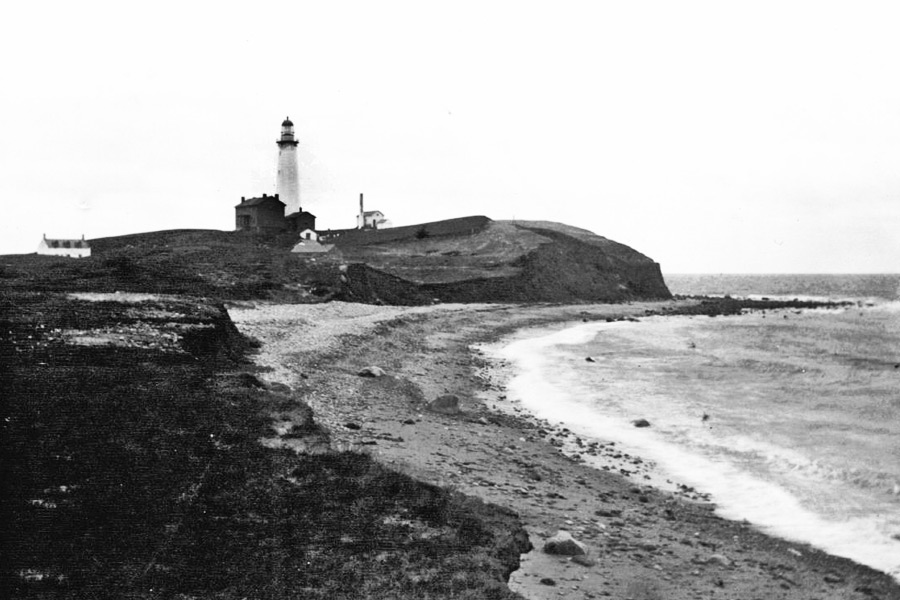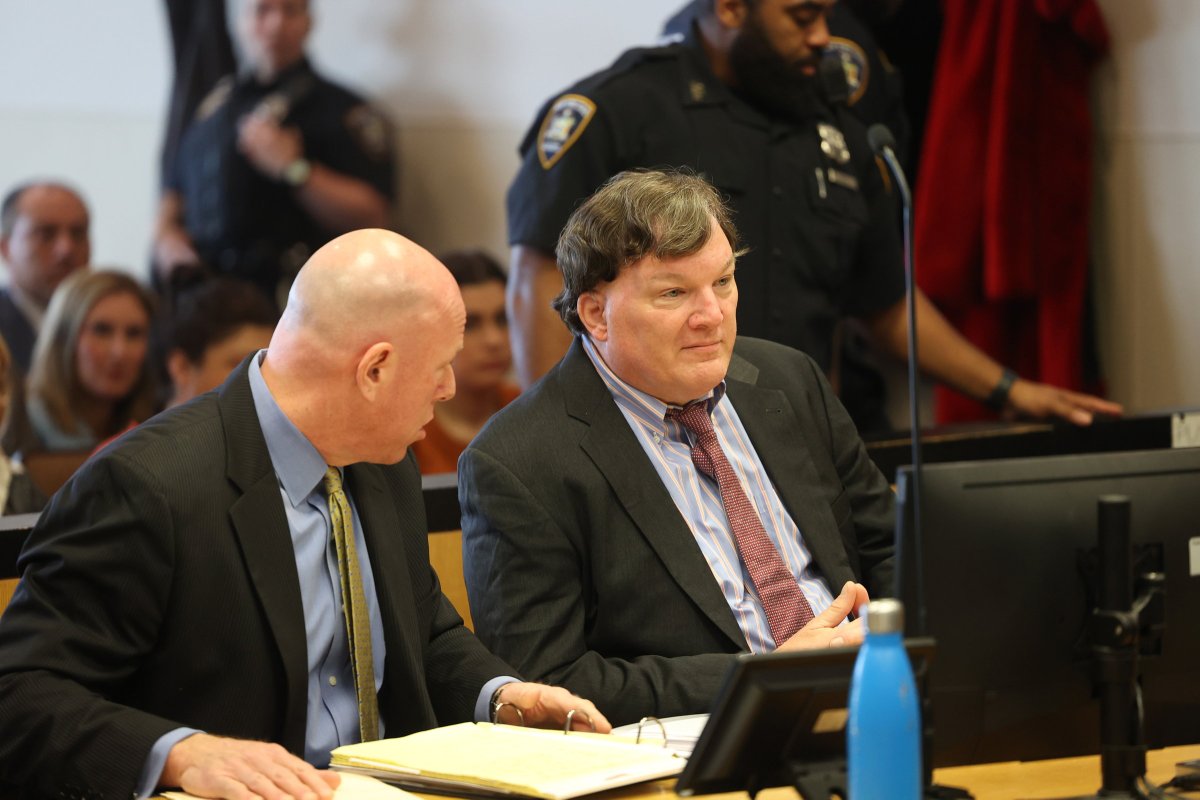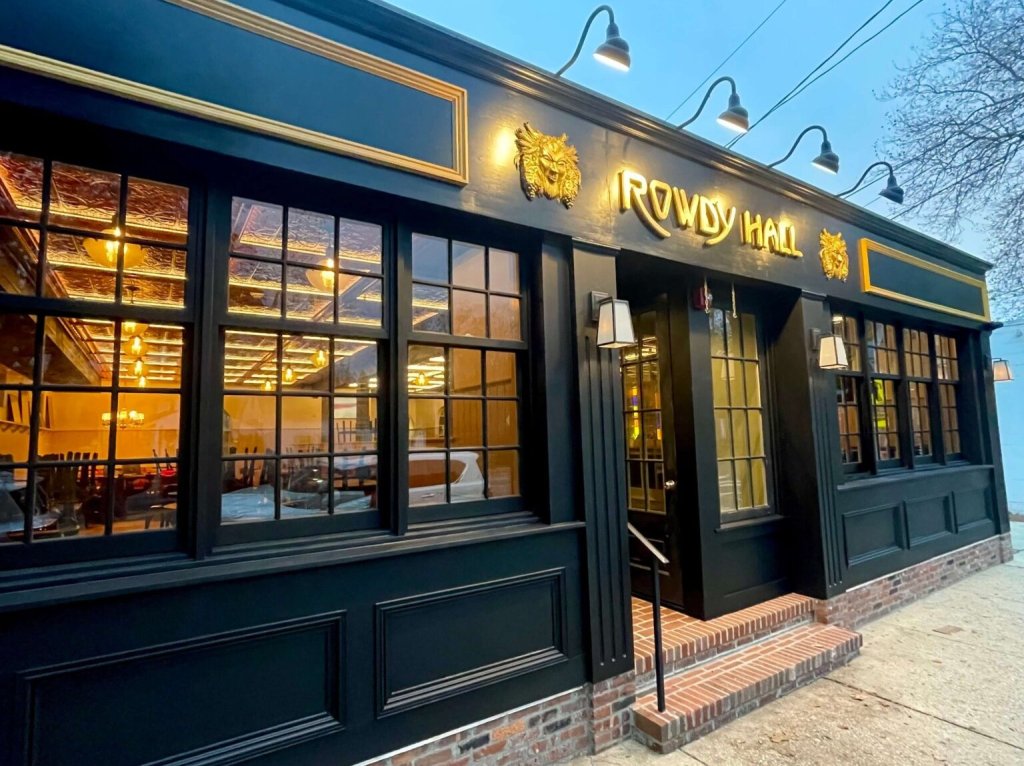Celebrating Giorgina Reid, Savior of the Montauk Lighthouse

Shortly after the sun sets on the evening of Saturday, November 29, a switch will be thrown on an electric circuit at the Montauk Lighthouse on the tip of Long Island, and that historic building, authorized by President George Washington, will suddenly become ablaze with Christmas lights, to the delight of several thousand people who will have driven out to Montauk to watch exactly that happen.
It’s become a tradition, the lighting of the Montauk Lighthouse, and after it happens speeches will be made, glasses will be raised and the National Anthem will be sung, and after that grand salute, the crowd will melt away back to where they came from, knowing that all is right with the world and this beacon of hope will continue to mark the beginning of the Christmas season as it has for so many before.
A different person is asked to pull that switch every year, and this year the Montauk Historical Society has asked me to do it, probably because of the role I played 40 years ago in introducing a small, remarkable woman to Montauk who then saved the Montauk Lighthouse from falling into the sea.
At the time, the erosion on the cliff face of the lighthouse was out of control. Erosion was shearing off the cliff face at a rate of about two feet a year. The Lighthouse was 297 feet from the edge in 1796 when it was built. It was 55 feet from the edge in 1967. Putting boulders around the base of the cliff had not stopped it. Nobody knew how to stop it. It was considered at that time as something inevitable by Montaukers, by the Town of East Hampton, in whose jurisdiction it was in, by the County of Suffolk, by the State of New York and by the U.S. Coast Guard, who occupied it.
In a separate matter in that year of 1967, for budgetary reasons, the U.S. Coast Guard was “demanning” nearly two-thirds of the lighthouses along the eastern seaboard. The work they did, warning mariners at sea, could just as easily be accomplished by a tall steel tower with a light on the top, operated from a nearby Coast Guard station by remote control. In the late fall of that year, the situation of the Montauk Lighthouse came to the attention of the Commander of the Eastern District of the U. S. Coast Guard on Governors Island. Abandoning Montauk was made to order. Not only could a beacon be built to replace it—further inland, safer, away from the erosion—but he could nip the problem of losing the Lighthouse to the sea in 20 or 25 years. There would be no need to mourn it. He’d have it taken care of now. He ordered Lieutenant Commander Mills of the Aid to Navigation Department to send a request to Commander Seufert, the Chief of Civil Engineering of the Coast Guard to locate a replacement site for the Lighthouse, at which they would build a steel tower in anticipation of abandoning the Lighthouse.
As it happened, I stumbled upon this order. I wanted to write a story about erosion at the Lighthouse for Dan’s Papers, and I had read that the Coast Guard had just announced the annual decrease in the distance from the cliff edge to the Lighthouse.
I called the Coast Guard at the Lighthouse. And an ensign told me that it really didn’t matter what those numbers were anymore. The order had come down. The Lighthouse was to be abandoned, and, to judge by what had happened at other Coast Guard lighthouses along the eastern seaboard, it would probably be blown up. Abandoned lighthouses were often vandalized or painted with graffiti. They’d find evidence of parties thrown in them. Vagrants sometimes slept in them. And there was the insurance liability to consider.
I was staggered by this news. It was impossible to think of Montauk without the Lighthouse. And then a friend told me how they had some years earlier blown up the Shinnecock Lighthouse in Hampton Bays. I told him there was no lighthouse at Hampton Bays, and he told me there isn’t now. He brought me a framed photograph of that lighthouse at the moment it was being blown up. It was halfway down, a puff of white smoke visible halfway up one side, just about to crash to the ground.
I published that photograph. And I organized a public demonstration at the Montauk Lighthouse to try to persuade the Coast Guard to cancel that order. We called it a “Light-In.” Several thousand people showed up at the parking lot of the Lighthouse carrying candles, lanterns, flashlights, torches, even flaming batons. We had a marching band, Scottish bagpipes, a fife-and-drum corps. Perry Duryea, the Leader of the New York State Assembly, attended. But the Coast Guard would not budge. It would only be two years later, in June of 1969, after another protest with nearly 5,000 people was held, that they finally relented and rescinded their order. And so the Montauk Lighthouse was saved from falling into the sea.
All of which, of course, had nothing to do with the basic problem, which was the erosion of the earth along its cliff face. At two feet a year, it would take until about 1982 for Mother Nature to do what the Coast Guard had now declined to do.
On the other hand, in 1970, in the middle of the battle to “save” the Lighthouse from being dynamited down, a woman named Giorgina Reid with her husband, Donald, showed up at my office, which was, at that time, in a former carriage house on Gay Lane in East Hampton.
She came uninvited. She was 60 years old at that time. She was about 4 foot 11. And she said she believed she could save the Montauk Lighthouse from falling into the sea. I was, at that time, 28, and I was not impressed.
She had a story. She and her husband, now retired, had been textile designers in New York City. They had an apartment in Jackson Heights, Queens. And with some money that had come their way they bought a small cottage on the edge of a 95-foot cliff overlooking Long Island Sound in Rocky Point, Long Island. This would be their retirement home.
Just two years after they bought it, in March of 1962, there was a terrible nor’easter. She and her husband went out to the cottage and that was fine. But the storm had caused about 10 feet of their front lawn facing the water to come tumbling down to the beach below.
Donald had argued that they should sell the house. Neighbors had warned them this would happen. He didn’t want to watch the rest of it go. But Giorgina said no. She had noticed that a huge amount of vegetation, reeds actually, had washed up on what was left of their beach. And it gave her an idea. She had heard that the Japanese knew a way to stop the sea by planting these reeds, phragmites and beach grass, on a series of small steps on a cliff face. The roots would grow into the soil. A rainstorm would come and instead of washing out the soil, it would run down over it. She thought it was worth a try.
At this point in my meeting with Giorgina, she showed me a slender book she had self-published that included pictures of the cliff face in front of their home, plans and elevations of the terracing that would support the reeds, descriptions of where to get these reeds and how to go about planting them. There were before and after pictures.
“These terraces have saved our cliff,” she told me.
The name of the book was on the front. HOW TO HOLD UP A BANK, it said.
“I’ve been reading about what you are doing at the Montauk Lighthouse. I believe this terracing would stop the erosion and save the Montauk Lighthouse.”
Could it do that? I was a young man full of myself. I told her to go see the Coast Guard, and I did not think that would get her anywhere. I gave her the phone numbers and the names of people to call on Governors Island and at the Lighthouse. And she left.
On the first Earth Day, April 22, 1970, Giorgina began coming out with her husband and a few volunteers from the Rocky Point area to do the plantings on the cliff face of the Montauk Lighthouse. At this point, the Coast Guard had agreed to not blow the place up. And I guess they were open to any schemes. Why not? How much damage could this little old lady do? Their attorneys were not happy about it, though, and required the Reids to buy an insurance policy to protect the Coast Guard in the event that anybody fell and got injured.
When they came, a few Coast Guardsmen came out and offered them coffee. But that was it. They watched.
There they were, some old people and a few students from Stony Brook University on this crackpot lark. The cliff face was huge. Eighty feet high and, if you measured it all around, about a quarter-mile in length. The Reids were concentrating on a patch that was about 10 feet by 20. It was getting nice and fluffed-up with the steps and the greenery of the beach grass growing in it. But for the rest, it was still dirt and rocks and pebbles that occasionally tumbled or streaked down to the sea.
In 1985 I went to a tribute to Giorgina Reid on the grounds of the Montauk Lighthouse. She wasn’t there. She was in her late 70s and unwell, and had finished the last patch of cliff face about five years earlier. But her children were there. Over the microphone, our local assemblyman read a long letter to Giorgina written by the President of the United States, Ronald Reagan. He wrote of her courage and about how there needed to be more like her. There were people at that tribute who started crying, and I was one of them.
Giorgina and her husband and volunteers had come out almost every Sunday that first year and had successfully stabilized one patch of the Lighthouse cliff face from top to the bottom. In the second year, the Coast Guard became believers. And they offered to have Coast Guardsmen help the Reids on the cliff face, but the Reids declined. They said they would like to do it themselves. But they could use lumber and plantings and fertilizer and maybe some help in hauling things up and down. And the Coast Guard did that.
Something of a partnership developed between the Coast Guard and the Reids in the years that followed. There they were, out there—they’d miss a week once in a while if there was a storm or if they were away—and when they came back, the coastguardsmen would ask about them. It is very hard to believe what I am going to tell you.
Giorgina Reid and her gang were out on that cliff face for 15 years. And they saved the Lighthouse from falling into the sea. And then, after Donald died and then Giorgina did, too, at the age of 92, the Coast Guard took over the project themselves and maintained it.

Indeed, there was one part of this that was very different from what the Reids did to save their home. In Rocky Point, the waves are small. At the Lighthouse, sometimes, they can be fierce. The terracing was fine for the cliff face, but on occasion the sea would undercut what they planted. It was now apparent that the terracing worked all the way down, but they’d need a necklace of big boulders around the base of the cliff, and, around 1992, one was installed to replace one put in in 1946 that was now failing.
You don’t hear anymore about how many feet the Lighthouse building, with its six-foot-thick stone walls, is from the edge of the sea. There are a few places it is closer than it was. But for the most part, the cliff face is holding, just about where it was when Giorgina got about 10 years into her project.
I sometimes think of Giorgina. This small, elderly woman, in retirement, had done something absolutely extraordinary, way beyond extraordinary.
She saved Montauk Lighthouse.
Years after I banged the drum and got the public all riled up to tell the Coast Guard not to do what they intended to do, I got a letter from the Coast Guard on Governors Island saying that they wanted to hold a luncheon on that island to honor Giorgina and me.
I hadn’t seen her in many years, other than sometimes to see her out the window when I was out at the Lighthouse and we could wave to each other hello. But now I called her. She’d gotten the letter too.
“Come by our house,” she told me, “and we’ll go to Governors Island together in your car.”
And so we did do that. It was in 1979. That is the date on the framed “awards” we got that sunny day in a brief ceremony before our outdoor picnic lunch on that island. My award is a “Certificate of Appreciation.” Her
award is a “Certificate of Accomplishment.” Coast Guard is a class act for doing that, in my opinion.
Before I pull the switch, I will, at 4 p.m., be in the main family living room of what was for centuries the home of a dozen generations of lighthouse keepers, and which now is the Giorgina Reid Room of the Montauk Lighthouse Museum run by the Montauk Historical Society. (The Feds own the land. The Coast Guard mans the Light. We will be having a cocktail party there as the crowd assembles.)
And then, at 5, I will tell this story over a loudspeaker—in brief, because its gonna be pretty cold—to the thousands of people there, and I will tell them that when my kids were small I’d tell them “their daddy saved the Lighthouse.”
But it wasn’t true.
Their daddy got the Coast Guard to agree not to tear it down. But it was Georgina Reid who saved the Montauk Lighthouse.
The 2014 Lighting the Montauk Lighthouse holiday festivities are Saturday, November 28, from 4:30 to 7 p.m.



